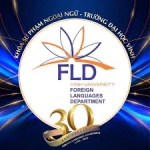Speaker
Description
The expansion of English across the globe has necessitated a shift in teaching methodologies to better equip learners in communicating with speakers from various linguistic and cultural backgrounds. In Vietnam, this need is particularly significant as the national goals of language teaching have gradually shifted towards catering to these communicative needs. In response, many teacher preparation programs have been implemented to prepare pre-service teachers to respond to these requirements. While these programs have made progress in fostering positive perceptions, the application of teaching English as an international language (EILT) in the classroom among these teachers remains largely unexplored. To address this gap, this study explores pre-service teachers’ perceptions and their reflections of practices concerning EILT. Using a 4-point Likert-scale questionnaire, the study gathered data from 85 pre-service teachers having participated in EIL courses at a language teacher training university in Hanoi, Vietnam. After that, semi-structured interviews were conducted with a subgroup of seven participants to gather their reflections on their EILT practices. The findings highlight a noticeable disparity between the participants’ perceptions and perceived practices. Although their perceptions were generally aligned with EILT in many respects, the practices demonstrated EILT’s marginal role in their classroom teaching. It further uncovers their underlying reasons, challenges faced and strategies adopted during this transition from theory to practice. This research sheds light on the complexity of practicing EILT in the context of Vietnam, contributing to a potentially widespread issue faced by pre-service teachers in similar contexts. Thus, it carries implications for pre-service teachers, EIL teacher trainers, curriculum designers and language assessment developers.
Keywords: EIL, EILT, pre-service teachers, perceptions, practices

